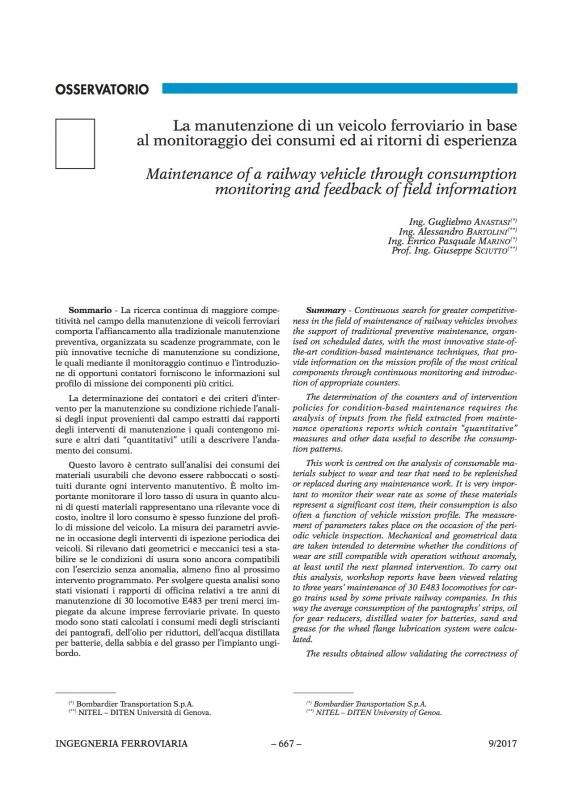
Summary - Continuous search for greater competitiveness in the field of maintenance of railway vehicles involves the support of traditional preventive maintenance, organised on scheduled dates, with the most innovative state-of- the-art condition-based maintenance techniques, that provide information on the mission profile of the most critical components through continuous monitoring and introduction of appropriate counters.
The determination of the counters and of intervention policies for condition-based maintenance requires the analysis of inputs from the field extracted from maintenance operations reports which contain “quantitative” measures and other data useful to describe the consumption patterns.
This work is centred on the analysis of consumable materials subject to wear and tear that need to be replenished or replaced during any maintenance work. It is very important to monitor their wear rate as some of these materials represent a significant cost item, their consumption is also often a function of vehicle mission profile. The measurement of parameters takes place on the occasion of the periodic vehicle inspection. Mechanical and geometrical data are taken intended to determine whether the conditions of wear are still compatible with operation without anomaly, at least until the next planned intervention. To carry out this analysis, workshop reports have been viewed relating to three years’ maintenance of 30 E483 locomotives for cargo trains used by some private railway companies. In this way the average consumption of the pantographs’ strips, oil for gear reducers, distilled water for batteries, sand and grease for the wheel flange lubrication system were calculated.
The results obtained allow validating the correctness of the preventive maintenance plan and suggesting changes. In addition the consumption rate analysis provides important information about the health of some key components. Finally, through the integration of these results with the readings from continuous monitoring, the evolution of the maintenance scheme is completed and the information in- dicating the remaining life of the components directly affected by the wear of materials analysed is exploited.
- Settembre





